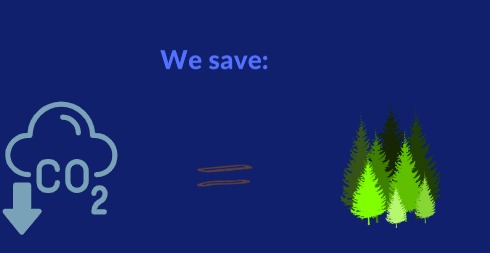Calcular emisiones de CO2
| CO2 SAVER BY USING POST-TENSIONING |
|||
|---|---|---|---|
| 1. MATERIALS SPECIFICATION | |||
| Concrete strength_28 days fck/fck,cube (Mpa) | |||
| Fluency strength rebars fyk | |||
| 2. BUILDING DATA | |||
| SELECT USE FOR THE SLABS: | |||
| DL: (SUPERIMPOSSED DEAD LOAD): | |||
| LL: (LIVE LOAD- USE): | |||
| Total area of slab (m2) |
|
||
| Number of storeys: |
|
||
| Height of storey: (m) |
|
||
| Total height of building = PT | |||
| Total height of building = HA | |||
| 3.DATA OF THE PANEL | |||

|
|||
| Larger Length (m) = L1 |
|
||
| Span's restraint condition L1 | |||
| Shorter Length (m) = L2 |
|
||
| Span's resgtraint condition L2 | |||
| 4.SELECTION OF TYPE OF SLAB | |||

|
|||
| DIRECTION OF THE SLAB: | |||
| TYPE OF SLAB: SOLID SLAB |
LOSA_MACIZA_SOLID_SLAB |
||
| SLAB CONFIGURATION: | |||
| PRESENCE OF BEAM: |
|
||
| 5.SECTION DESIGN POST-TENSIONING SLAB | |||
| RECOMENDED THICKNESS (Post-tensioning)= |
|
||
| SELECT SECTION FOR DESIGN (POST-TENSIONING SLAB) |
MACIZA-SOLID SLAB |
||
| Self weight's slab: |
|
||
| Minimum density's tendon = kg/m2 |
|
||
| Maximum density's tendon = kg/m2 |
|
||
| % SELF WEIGHT TO BALANCE (between 40 to 70%) |
|
||
| SELECT DIAMETER OF THE STRAND | |||
| Prestressed steel required mm2/m2 to balance self weight |
|
||
| Number of strands per m2 or number of strands per ribs |
|
||
| Density of prestressed steel |
|
||
| Verification of minimum pre compression |
|
||
| Minimum rebar steel (geometrical ratio) |
|
||
| 6.SELECTION DESIGN CONCRETE REINFORCEMENT SLAB | |||
| RECOMMENDED THICKNESS (Concrete reinforcement) |
|
||
| Required thickness by strength (mm) |
|
||
| REQUIRED SECTIONS'S DESIGN |
|
||
| SELECT THICKNESS (R.C.) (introduce the figure closest to RECOMMENDED THICKNESS) | |||
| Self weight's slab: |
|
||
| 7. CALCULATE EMISSIONS CO2 / SLAB | |||
| Post-tensioning Condition Material Relation | |||
| Volumen of concrete: |
|
||
| Rebars reinforcement (span) |
|
||
| Rebars reinforcement (supports) |
|
||
| Prestresing steel |
|
||
| Injection volumen: |
|
||
| Ducts: |
|
||
| Reinforcement Concrete Condition Material Relation | |||
| Volumen of concrete: |
|
||
| Rebars reinforcement (span) |
|
||
| Rebars reinforcement (supports) |
|
||
| Post-tensioning Condition CO2 kgm2 emission | |||
| Volumen of concrete: |
|
||
| Rebars reinforcement (span) |
|
||
| Rebars reinforcement (supports) |
|
||
| Prestresing steel |
|
||
| Injection volumen: |
|
||
| Ducts: |
|
||
| TOTAL C02 Kg/m2 (PT) |
|
||
| Reinforcement Concrete CO2 kg/m2 emission | |||
| Volumen of concrete: |
|
||
| Rebars reinforcement (span) |
|
||
| Rebars reinforcement (supports) |
|
||
| TOTAL C02 Kg/m2 (RC) |
|
||
| 8. TOTAL EMISSIONS CO2 / SLAB | |||
| CO2 EMISSIONS IF YOU USE POST-TENSIONING TECHNOLOGY |
|
||
| CO2 EMISSIONS IF YOU USE REINFORCE CONCRETE (non use of post-tensioning) |
|
||
| REDUCTION OF EMISSION USING POST-TENSIONING |
|
||
| PERCENTAGE OF REDUCTION OF CO2 EMISSIONS |
|
||
 |
|||

